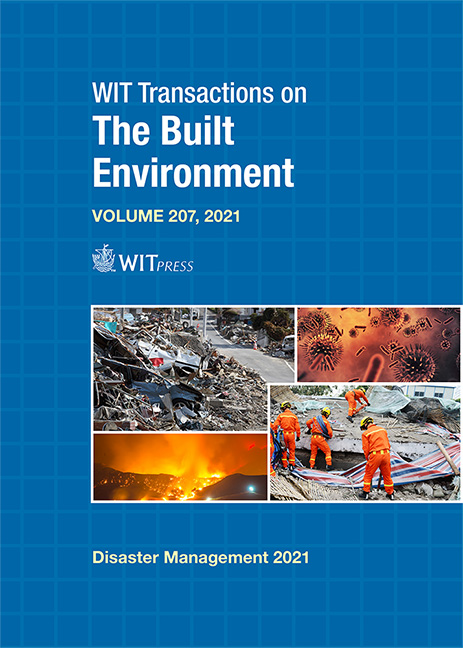SEMI-QUANTITATIVE METHODOLOGY FOR DISASTER RISK ASSESSMENT: THE CASE STUDY OF PIPUS VILLAGE, AMAZONAS DEPARTMENT, PERU
Price
Free (open access)
Transaction
Volume
207
Pages
11
Page Range
233 - 243
Published
2022
Paper DOI
10.2495/DMAN210191
Copyright
Author(s)
JHON E. CHAHUA JANAMPA, JHESSICA M. GUERRERO PINEDO
Abstract
The objective of this case study was to know the risk levels of Pipus village in Amazonas-Peru in order to have a technical document for the local government to access financial funds to implement actions for risk control and reduction associated with mass movements and floods. To achieve this objective a semi-quantitative methodology was applied based on the hierarchical analysis process. It allows an easy and fast way to quantify the qualitative variables (conditioning factors, triggering factors, fragility, resilience, etc.). For this, a geological, geomorphological and geodynamic mapping of the study area was carried out and the vulnerability index card filling for all the exposed elements as well, which were processed in a geographic information system. This methodology allowed characterizing the hazard, analyzing the vulnerability and calculating the risk of the elements exposed in Pipus village. Thirty seven homes were identified at very high risk of debris flow hazard; a landslide hazard in road; and river flood hazard in a bridge, sanitary system and communal premise, adding a total of six million PEN between damages and losses.
Keywords
semi-quantitative methodology, risk levels, landslide hazard, debris flow hazard, river flood hazard




